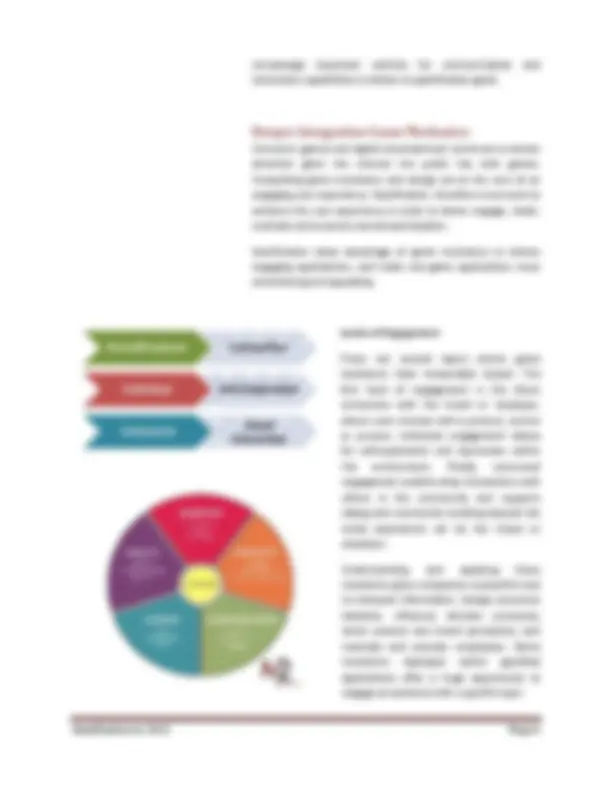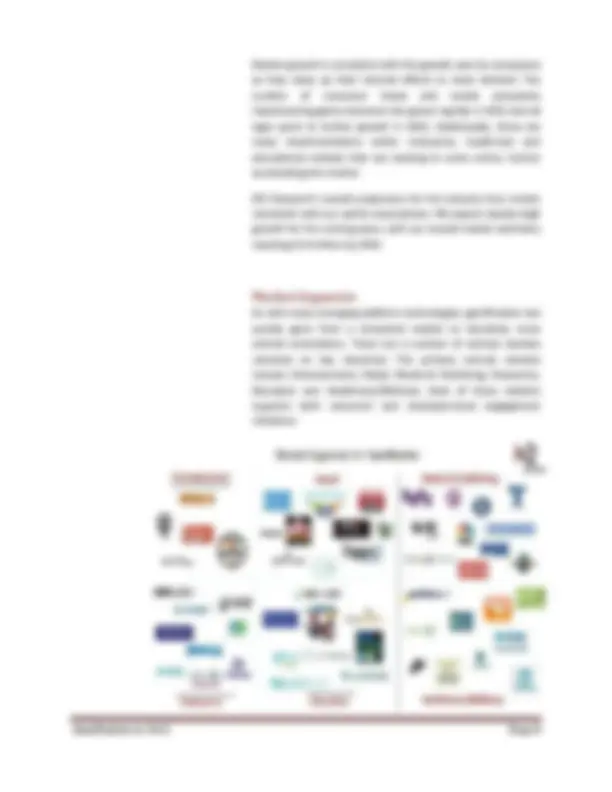



















Estude fácil! Tem muito documento disponível na Docsity

Ganhe pontos ajudando outros esrudantes ou compre um plano Premium


Prepare-se para as provas
Estude fácil! Tem muito documento disponível na Docsity
Prepare-se para as provas com trabalhos de outros alunos como você, aqui na Docsity
Os melhores documentos à venda: Trabalhos de alunos formados
Prepare-se com as videoaulas e exercícios resolvidos criados a partir da grade da sua Universidade
Responda perguntas de provas passadas e avalie sua preparação.

Ganhe pontos para baixar
Ganhe pontos ajudando outros esrudantes ou compre um plano Premium
Comunidade
Peça ajuda à comunidade e tire suas dúvidas relacionadas ao estudo
Descubra as melhores universidades em seu país de acordo com os usuários da Docsity
Guias grátis
Baixe gratuitamente nossos guias de estudo, métodos para diminuir a ansiedade, dicas de TCC preparadas pelos professores da Docsity
Market Update Consumer and Enterprise Market Trends
Tipologia: Notas de estudo
1 / 25

Esta página não é visível na pré-visualização
Não perca as partes importantes!


















Wanda Meloni, Principal Analyst Wolfgang Gruener, Analyst
In comparison, the most successful movie of 2011, Harry Potter and the Deathly Hallows Part 2 , grossed $381 million. And while Call of Duty breaks sales records across entertainment genres, it is still not a title that resonates with all consumers. The booming success of more casual, social, and mobile gaming touches a wide range of age and gender preferences. Games such as Bejeweled , Farmville , and Angry Birds come from a crop of companies ‐ PopCap, Zynga, and Rovio ‐ and have helped open the floodgates to the number of people playing games. In particular, social games appeal to a much broader demographic than traditional games. These games are played by men, women and children of all ages. Children between the ages of 8 – 15 say they now visit Facebook more than any other site on the Internet. 1 The Social Element This explosion of games appeals to a wider mass market audience and has greatly expanded the notion of who and how people play games. Social games today heavily rely on the large social networks of Facebook in the US, as well as GREE and DeNA in Japan. These social networks provide the perfect environment for social collaboration and user delivery. Google's DoubleClick division estimates Facebook's user base at 970 million users (January 2012). This is not quite half of the entire Internet population, which stands at just over 2 billion users worldwide, according to Internet World Stats. DoubleClick estimates that Facebook receives 33 billion visits from its user base per month, which translates to just over one visit per day per user, on average. Per visit, those users click on 31 pages and stay for more than 23 minutes, generating a stunning 1.4 million user‐years per month. Social games are reaching a significant portion of Facebook users. The top five social app/gaming companies on Facebook now reach a combined 430 million monthly active users, according to App Data. The enormous reach of social platforms and their dramatic mass‐market impact makes them (^1) M2 Research Kids and Games Research, 2012
increasingly important vehicles for communication and interaction capabilities to deliver on gamification goals. Deeper Integration Game Mechanics Consumer games and digital entertainment continues to attract attention given the interest the public has with games. Compelling game mechanics and design are at the core of an engaging user experience. Gamification, therefore must work to enhance the user experience in order to better engage, retain, motivate and promote overall participation. Gamification takes advantage of game mechanics to deliver engaging applications, and make non‐game applications more entertaining and appealing. Levels of Engagement There are several layers where game mechanics have measurable impact. The first level of engagement is the direct connection with the brand or employer, where users interact with a product, service or process. Individual engagement allows for self‐exploration and expression within the environment. Finally, communal engagement enables deep interactions with others in the community and supports dialog and community building beyond the initial parameters set by the brand or employer. Understanding and applying these mechanics gives companies a powerful tool to transport information, change consumer behavior, influence decision processes, direct product and brand perception, and motivate and educate employees. Game mechanics deployed within gamified applications offer a huge opportunity to engage an audience with a specific topic.
Industry Overview The adoption of applying game mechanics in more non‐ traditional industries has grown exponentially in the past 18 months. This is due in part to the growth of social and mobile games, as well as the increasing consumer adoption of social media. Market Size and Projections (in millions) 2011 2012 2013 2014 2015 2016 Total $100 $242 $522 $980 $1,707 $2, Source: M2 Research M2 Research estimates that the market spend on gamification solutions, applying game mechanics and behavioral analytics in non‐traditional applications will reach $242 million by the end of 2012, which is more than double from 2011. Revenue estimates are comprised of a number of components that includes: 1) platform vendor revenue, 2) agency and production revenue and 3) internal development.
Market growth is consistent with the growth seen by companies as they ramp up their internal efforts to meet demand. The number of consumer brand and media companies implementing game elements has grown rapidly in 2011 and all signs point to further growth in 2012. Additionally, there are many implementations within enterprise, healthcare and educational markets that are starting to come online, further accelerating the market. M2 Research’s overall projections for the industry thus remain consistent with our earlier assumptions. We expect double‐digit growth for the coming years, with our overall market estimates reaching $2.8 billion by 2016. Market Segments As with many emerging platform technologies, gamification has quickly gone from a horizontal market to decisively more vertical orientations. There are a number of vertical markets centered on key industries. The primary vertical markets include: Entertainment, Retail, Media & Publishing, Enterprise, Education and Healthcare/Wellness. Each of these markets supports both consumer and employee‐level engagement initiatives.
Source: M2 Research Note the shift in the market focus from 2010 to 2011. In 2010, the largest market was entertainment, representing 40%, while in 2011 enterprise represented the largest market at 25%. Source: M2 Research
Client Implementations In terms of client implementation, almost half of all clients, or 47%, are looking to increase user engagement. Engagement weighs‐in significantly more than brand loyalty or brand awareness as motivating factors for implementation. Source: M2 Research When compared to the 2010 survey, brand loyalty and awareness actually went down in importance in 2011, while user engagement increased slightly. Additionally, in 2011 we added training or motivation, which also showed a shift. Source: M2 Research Brand Awareness 15% Brand Loyalty 22% User Engagement 47% Training 7% Motivation 9%
2012 Trends and Forecast: Consumer Gamification M2 Research expects that the consumer‐level honeymoon period for gamification will be largely over by the end of 2012 and leveraging game mechanics implementation will have become a significant supporting pillar for integrated marketing. When done properly, using gamification for market‐branding adds another level of engagement to a company’s social marketing strategies. In 2012, businesses will increasingly expect ROI accountability and measurable results to replace much of the early excitement for gamification that focused on "gamified" applications that frequently have been treated as standalone opportunities. The Evolving Opportunity A considerable benefit for consumer gamification is the fact that consumers are constantly evolving their online social behavior. Social networks and aggregators, such as Facebook, Google+ and even Twitter are accessible consumer platforms that are driving social behavior and trends, making them absolutely necessary tools for marketers. The 2012 opportunity The opportunity for gamification will grow on the grounds of user incentives for the consumers of applications and marketer incentives for the creators of gamified applications. For consumers, gamification will increasingly be geared toward the desire to have "The opportunity for gamification will grow on the grounds of user incentives for the consumers of applications, and marketer incentives for the creators of gamified applications."
2012 Trends and Forecast: Game Design in the Enterprise M2 Research expects game design within the enterprise to quickly rise and become the dominant segment of gamification by the end of 2013. This trend is amplified by an accelerating environment of consumerization. If the smartphone/tablet is the predominant hardware in the future mainstream work environment, gamification is the corresponding software component. First used to describe the effects of Web 2.0 more than a decade ago, consumerization is about to enter a new phase as businesses adopt traditional game mechanics to drive competitive advantages and react to industry shifts more effectively. In enterprise gamification, organizations replace defined business processes with desired outcomes by influencing and establishing sustainable behaviors. Outcomes are separated into internal and external desires, both of which are designed to deliver measurable results to support and, in some instances, replace key performance indicators (KPIs).
Market Forecast Enterprise gamification is an indicator that gamification is growing up and is extending its reach beyond consumer marketing to the operational core of a business. As more solutions start to come on the market in 2012, many companies will begin to implement key feature sets. M2 Research estimates that by the end of 2012, enterprise‐ driven gamification will represent 38% of the overall market, or $91 million. This figure is a substantial leap from 2011 when enterprise applications were still few and far between. Strategy and Approach As enterprise gamification establishes itself as a critical business tool to deliver business goals, businesses and providers will evolve business analysis to apply behavior‐changing game mechanics. M2 Research foresees a number of implementations where gamification may have significant relevance within an enterprise environment: Workforce Criteria : Enterprise gamification has to address a much broader age and education range than consumer gamification applications. Businesses have to reach across different age groups and education levels, and remain laser focused on their desired outcomes at the same time. Behavioral Pattern Analysis : Enterprise gamification has a strong need for studying behavioral patterns within a targeted workforce. The capability to understand existing patterns, psychology, desires, and motivations as well as to understand how these characteristics can be influenced to invoke changed behavior will become an increasingly important criteria and differentiator for solution providers as enterprise gamification emerges. "For 2012, we expect platform and solution developers to dive deep into examining and leveraging user psychology, evolve their UX design toward that goal, and implement R&D strategies in their overall application budget."
Traditional game mechanics offer the tools that are required to create the infrastructure and support network to sustain the motivation. Primary tools for enterprise gamification include:
Reaching beyond the hype of gamification will require organizations to think beyond the obvious and realize that gamification is not just a pure marketing play, and not a game. It involves various additional talents that need to be in sync. Game mechanics that resonate past the hype require: Dedicated gamification budgets Audience psychology research Engagement strategies at the development level Understanding of game theory Planning, implementing and growing a gamified application requires an understanding of game mechanics and their effects, the capability to track user behavior and measure activities in real‐time, flexibility to apply application changes, deep integration and compatibility with social networks, and a clear definition of metrics with a corresponding base line to measure the success of an application. As attractive gamification and its opportunities for organizations are, risk factors remain and should be taken into consideration as part of a gamification strategy. In particular, we believe that there will be a reasonable learning curve with variables that are unique to brands/products/businesses and their user groups. A trial and error component should be part of every gamification strategy. Especially in product marketing, organizations will have to pay special attention to the desires of their users and create ways to integrate a brand effectively, without alienating a user. Despite the anticipated growth rates, gamification will remain a market that will be carefully evaluated by potential customers for platform providers. The industry must continue to educate their target markets, plan for tracking metrics, and build products and services responsibly.